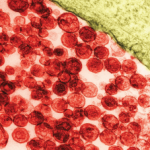With electronic clinical quality measures tailored for treating gout patients, physicians and their teams now have tools to measure and improve gout care performance and outcomes…


With electronic clinical quality measures tailored for treating gout patients, physicians and their teams now have tools to measure and improve gout care performance and outcomes…

In the past nine years, visits to the emergency department by gout patients have increased by almost 27%. Researchers suggest physicians may not adequately be addressing the burden of gout and the underlying accumulation of uric acid, driving the dramatic increase in emergency department visits in the U.S…

New research raises questions about the cardiovascular safety of febuxostat for gout patients compared with allopurinol. The study found that although febuxostat was noninferior to allopurinol, febuxostat-treated patients had similar overall rates of major adverse cardiovascular events as allopurinol-treated patients, but had higher rates of all-cause mortality and cardiovascular mortality…

New research examined the link between a reduction in serum uric acid (SUA) levels and the reduced risk of renal function decline in patients with gout. The findings suggest that aggressive serum acid-lowering approaches may be helpful in slowing the progression of renal disease…

In a recent study, researchers examined synovial fluid and non-inflamed tophi from the acutely inflamed joints of patients with gout, finding that monosodium urate (MSU) crystals trigger a distinct physiological NETosis pathway that coats MSU crystals in DNA that persists in tissues as gouty tophi…
Gene Emery |
(Reuters Health)—Gout sufferers with major pre-existing heart disease face a higher risk of death if they are treated with the drug febuxostat, a large long-term study has concluded. The risk of death from cardiovascular disease was 34% higher with febuxostat than with allopurinol. When researchers considered deaths from any cause, the risk was 22% higher…
Scott Baltic |
NEW YORK (Reuters Health)—People with gout face a modestly increased risk, of about 20%, for developing osteoporosis, compared to people without gout, researchers in Taiwan suggest. In their population-based study to examine a possible association between gout and subsequent osteoporosis, Dr. Victor C. Kok of Asia University (Taiwan), Taichung, and colleagues retrospectively analyzed data from…

Subcutaneous belimumab has been approved in the EU to help treat patients with active autoantibody-positive SLE…

In a Year in Review session at the 2017 ACR/ARHP Annual Meeting, Daniel Solomon, MD, MPH, highlighted the latest and most intriguing aspects of clinical research on rheumatic diseases from 2017. His discussion touched on medical therapy, genetics, the effects of bariatric surgery and diet, cancer risk and more…

Veronika Sharp, MD, Alice Chuang, MD, Lily Kao, MD, RMSK, & Midori Jane Nishio, MD, RhMSUS |
A 57-year-old Ghanaian woman was referred to our rheumatology practice with acute, left elbow swelling and pain. The referring oncologist suspected gout, because the patient had hyperuricemia. Six months before, the patient was diagnosed with stage IV human T-lymphotropic virus type 1 (HTLV-1)-associated adult T cell lymphoma (ATLL). Her initial oncologic manifestations included multiple thoracic,…